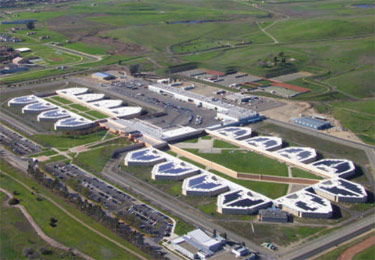Overview
Within This Page
Formally defined, economic analysis is the monetary evaluation of alternatives for meeting a given objective. For example, to meet the need for additional office space a decision maker might consider new construction, renovating an existing facility, or leasing another building. The evaluation is based on a comparison of discounted costs and benefits over a fixed time period of time. Alternatives can be summarized in terms of the ratio of total benefits to total cost (benefit-cost ratio) or equivalently, the total net benefits (net present value).
Economic analysis has been integrated into the decision making process of most if not all U.S. federal agencies and influenced issues ranging from environmental regulation to building design. Building owners use economic analysis to determine the most economically efficient or cost-effective choice among building alternatives.
The Economic Analysis Process
The steps to estimate the economic consequences of a decision, as listed in Ruegg's and Marshall's Building Economics—Theory and Practice, are summarized below:

- Define the problem and the objective.
- Identify feasible alternatives for accomplishing the objective, taking into account any constraints.
- Determine whether an economic analysis is necessary, and if so, the level of effort which is warranted.
- Select a method or methods of economic analysis.
- Select a technique that accounts for uncertainty and/or risk if the data to be used with the economic method are uncertain.
- Compile data and make assumptions called for by the economic analysis method(s) and risk analysis technique.
- Compute a measure of economic performance.
- Compare the economic consequences of alternatives and make a decision, taking into account any non-quantified effects and the risk attitude of the decision maker.
Types of Economic Analysis Methods
The process described above is cost-benefit analysis, and is appropriate where both the costs and benefits can differ among alternatives. When the benefits are equivalent, the evaluation of alternatives is simplified to a cost comparison, or cost- effectiveness analysis, as described in OMB Circular A-94.
Life-Cycle Cost Analysis

The solar photovoltaic system, cool roofing, and energy efficiency upgrades installed at Alameda County's Santa Rita Jail have resulted in net savings of $410,000 in its first year of operation. (Courtesy of R. Solari)
Life-Cycle Cost Analysis (LCCA) is a type of cost-effectiveness study common in the comparison of building projects or, as described in 10 C.F.R § 436A , for the evaluation of energy and water conservation measures. Life cycle costs can include all costs of building ownership over its service life, including construction, maintenance & operation, recapitalization, and disposal. Alternatives can be evaluated on the basis of discounted total cost, or the net savings relative to a "do nothing" alternative such as the savings-to-investment ratio, internal rate of return, or time to payback.
Value Engineering
Value Engineering is a systematic evaluation procedure directed at analyzing the function of materials, systems, processes, and building equipment for the purpose of achieving required functions at the lowest total cost of ownership.
According to VE experts Kirk and Dell'Isola, "Value Engineering is a team approach that analyzes a function by systematically developing the answers to such questions as: what is it?; what does it do?; what must it do?; what does it cost?; what other material or method could be used to do the same job without sacrificing required performance or degradation to safety, reliability, or maintainability?" VE is concerned with elimination or modification of anything that adds costs without contributing to the program functional requirements. Reductions in a project's scope or quality to get it into budget are not considered VE—those decisions are simply "cost cutting".
Major public works projects may undergo both VE studies and LCCA, and while the two practices serve separate purposes, their consideration of design alternatives is often interrelated. For example, value engineering can be used to complement a life-cycle cost analysis when selected LCC alternatives cannot be adopted without exceeding the project budget. VE can be utilized to reduce initial costs of design features other than those under study in a LCCA. If the VE effort results in sufficient reduction in initial costs, savings may allow selected LCC alternatives to be adopted within the overall program budget, thus optimizing the long-term cost-effectiveness of the project as a whole.
Limits of Economic Analysis
Perhaps the most challenging aspect of economic analysis is identifying those benefits and costs that resist quantification. These typically include aesthetics, safety, environmental impact, historic preservation. Refer to the WBDG page on "Consider Non-Quantifiable Benefits."
Sensitivity Analysis
Sensitivity analysis should be considered when running the numbers and evaluating alternatives. Effects of discount rates, escalation rates, utility costs, etc., can be overlooked. A rigorous sensitivity analysis can help establish which factors are most important in the life cycle analysis and accurate impacts on the decision-making. For example, project costs need to be linked to the BIM models for accuracy. Something as simple as net quantities of drywall may not be accurate due to reductions based on window areas, even though the drywall is needed in the construction process. So it is essential to coordinate cost information across all platforms and aspects of a project.
Relevant Codes and Standards
In varying degrees, the federal government, state and municipal entities have all ratified legislative mandates requiring economic analysis be performed on most capital investment programs. Some of the key federal mandates and standards are listed below.
Life-Cycle Cost Analysis (LCCA)
- Code of Federal Regulation, 10 C.F.R. § 436A "Federal Energy Management and Planning Programs, Methodology and Procedures for Life-Cycle Cost Analyses"
- DOD Tri-Services Memorandum of Agreement (MOA) on "Criteria/Standards for Economic Analyses/Life-Cycle Costing for MILCON Design" , 1991. Provides guidance on LCCA for military construction design.
- PBS-P100 Facilities Standard for the Public Buildings Service—Chapter 1.10 Methodologies by the General Services Administration (GSA), 2015.
- OMB Circular A-94 Guidelines for Benefit-Cost Analysis of Federal Programs
Value Engineering (VE)
- DoD Acquisition Guidebook
- Federal Acquisition Regulation (FAR), Part 48, Value Engineering
- Federal Acquisition Regulation (FAR), Part 52.248, Solicitation Provisions and Contract Clauses—Value Engineering
- OMB Circular A-131—Value Engineering
- Public Law 104-106, Section 4306 of the National Defense Authorization Act—Value Engineering for Federal Agencies
- PBS-PQ250 Value Engineering Program Guide for Design and Construction by the General Services Administration (GSA), 1992.
Additional Resources
Publications
- The Architect's Handbook of Professional Practice, 15th Edition by the American Institute of Architects. 2013.
- Chapter 7.4 Value Analysis
- Chapter 7.5 Life Cycle Costing
- Architect's Essentials of Cost Management by Michael Dell'Isola. New York, NY: John Wiley & Sons, Inc., 2002.
- Building Economics for Architects by Thorbjoern Mann. New York, NY: Van Nostrand Reinhold, 1992. ISBN 0-442-00389-7.
- Building Economics: Theory and Practice by Rosalie Ruegg and Harold Marshall. New York, NY: Van Nostrand Reinhold, 1990. ISBN 0-442-26417-8.
- P-120 Project Estimating Requirements for the Public Buildings Service by the General Services Administration (GSA), 2007.
- Life-Cycle Costing for Design Professionals, Second Edition by Stephen Kirk, AIA and Alphonse Dell'Isola, PE. New York, NY: McGraw-Hill, Inc., 1995.
- Life-Cycle Costing Manual for the Federal Energy Management Program by Sieglinde Fuller and S.R. Peterson. NIST Handbook 135. National Institute of Standards and Technology, 1995.
- MIL-HDBK-115A DOD Handbook U.S. Army Reverse Engineering Handbook (Guidance and Procedures)
- P-442 Economic Analysis Handbook by the Naval Facilities Engineering Command (NAVFAC), 2013.
- The Whitestone Facility Operations Cost Reference by Luca Romani et. al. Santa Barbara, CA. (Annual).
Others
- Federal LCCA Software Tools
- Building Life-Cycle Cost Program—an economic analysis tool developed by the National Institute of Standards and Technology for the U.S. Department of Energy Federal Management Program.










